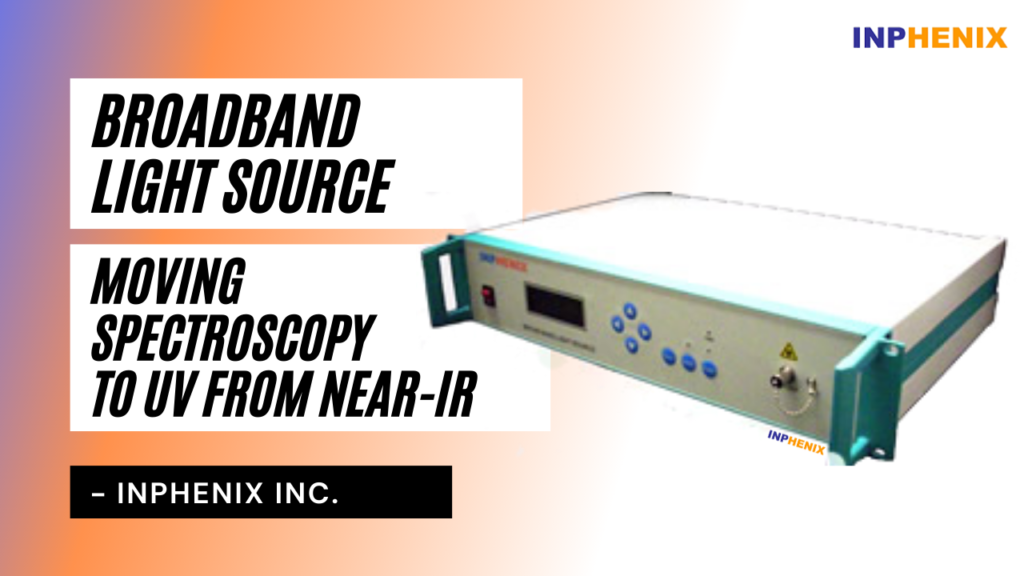
Discharge lamps, dye lasers, and optical parametric oscillators were the only valuable sources for spectroscopy in the early 1990s or mid-1980s. However, as optical technologies evolve and their applications broaden, we have been introduced to new light sources and lasers. The broadband light source (BLS) is one such type of light source that has gained popularity in optical spectroscopy.
In this blog post, we will look at what a broadband light source is, how it works, and how it opens up new opportunities for spectroscopists. So, without further ado, let’s begin with a definition of a broadband light source.

A broadband light source, also known as a superluminescent source, is a superluminescent diode with a wavelength of emission of 700 nm and a bandwidth of 1700 nm that is perfect for OEM integration. Moreover, it is often used for multi-wavelength tests for measuring wavelength-division-multiplexing components. This implies it has a wide range of applications in the medical, telecommunications, sensing, and measurement industries.
Broadband light sources are utilized for ultrahigh-resolution optical coherence tomography, passive component testing, and multi-channel fiber bragg grating interrogation, in addition to these applications. Now, let’s take a closer look at how a broadband light source works.
The working principle of a BLS is very simple. A prism or grating disperses a beam of radiation from a broadband source. The scattered radiation strikes a slit, through which a small range of wavelengths passes to reach a detector. By rotating the prism or grating, consecutive wavelengths are brought onto the slit, allowing the spectrum to be scanned.
Moreover, broadband light sources are a great pick for Near-Infrared (NI) spectroscopy due to several factors. The following are three of BLS’s most notable characteristics.
A. The broadband light source’s directional output enables substantially better levels of light transmission efficiency into the fiber optic cable.
B. This light source have an extremely limited spectral bandwidth because they generate coherent light, allowing them to transport data at significantly greater speeds.
C. BLS is frequently modulated directly. This is a simple and effective method of converting data to an optical signal.
Eventually, these exceptional properties play a critical role in making BLS a viable option for spectroscopy and optical fiber communication applications. Let us now proceed to the next section of this blog to learn how broadband light sources provide new opportunities for spectroscopists.
Broadband light was previously only available from discharge lamps, plasma sources, hot glow bars, or the sun for much of the last decades. Also, before the laser, one of the only ways to obtain narrowband line radiation was to utilize a low-pressure gas discharge lamp, such as a mercury or sodium lamp.
However, a new generation of comparatively robust sources, such as Supercontinuum lasers, laser-driven plasma sources, and high brightness LEDs, are finding a place in the spectroscopist’s toolset.
The outstanding qualities of these broadband light sources help in the advancement and efficiency of spectroscopy. This technology is not only more advanced than traditional light sources, but it is also less expensive. All of these novel light sources are enhancing spectroscopy from the near-IR to the UV.
Moreover, based on the research and improvements being conducted on broadband light sources, we can confidently predict that we are yet to witness substantial growth in industrial applications of broadband light sources in the near future.
Inphenix is a USA-based manufacturer and supplier of innovative light source and laser devices, including swept-source, Distributed feedback lasers (DFB lasers), semiconductor optical amplifiers (SOAs), superluminescent diodes (SLDs), Gain chip, and a lot more. In addition, the company also manufactures customized devices based on your requirements.
